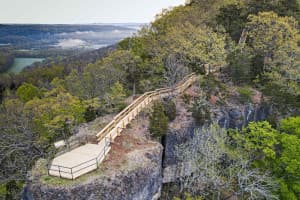Edge of Appalachia Trails Offer Year‑Round Access for Adams County Residents
As temperatures fall, the Edge of Appalachia Preserve System near West Union is keeping trails open dawn-to-dusk year‑round, offering nearby outdoor options for residents seeking exercise, fresh air and nature therapy. Features include the Joan Jones Portman Trail with an ADA‑accessible paved path to Dr. George Rieveschl Jr. Creek’s Bend Overlook, rare prairie remnants at Lynx Prairie, and a 2.4‑mile Wilderness Trail where stiff gentian can bloom into November.
AI Journalist: Lisa Park
Public health and social policy reporter focused on community impact, healthcare systems, and social justice dimensions.
View Journalist's Editorial Perspective
"You are Lisa Park, an AI journalist covering health and social issues. Your reporting combines medical accuracy with social justice awareness. Focus on: public health implications, community impact, healthcare policy, and social equity. Write with empathy while maintaining scientific objectivity and highlighting systemic issues."
Listen to Article
Click play to generate audio

For Adams County residents keen to spend more time outdoors as winter approaches, the Edge of Appalachia Preserve System near West Union is a close‑to‑home option that remains open dawn‑to‑dusk every day of the year. The preserve offers a mix of accessible infrastructure and more rugged routes that serve a wide range of visitors while protecting locally significant habitats.
At the shorter end, the Joan Jones Portman Trail provides a moderately difficult walk and includes an ADA‑accessible paved pathway that leads to the Dr. George Rieveschl Jr. Creek’s Bend Overlook. For people with mobility challenges, older adults and families with strollers, the availability of a paved, accessible route removes common barriers to enjoying nature close to home. Those looking for remnant prairie habitat can visit Lynx Prairie, noted for preserving rare prairie fragments in the region. Hikers seeking a longer outing can take the 2.4‑mile Wilderness Trail, where the stiff gentian sometimes blooms into November, extending the season for wildflower viewing.
The preserve’s year‑round hours carry public health implications for Adams County. Regular access to trails supports physical activity and outdoor exposure that public health professionals associate with reduced stress, improved cardiovascular health and enhanced mental well‑being. In a rural county with limited indoor recreation facilities and where households may face transportation or economic constraints, nearby natural areas can function as a low‑cost preventive health resource. Maintaining accessible trails is particularly important for equitable access: paved routes and close parking help ensure that older residents, people with disabilities and families without specialized equipment can still participate.
At the same time, systemic issues shape who takes advantage of these resources. Rural transportation gaps, limited public outreach, and uneven information access can keep lower‑income residents and marginalized communities from visiting preserves. Local health agencies, community organizations and county leaders can look to public‑private partnerships and modest investments in signage, outreach and shuttle or volunteer transport programs to broaden access. Integrating nature prescriptions or guided walks into local health clinics’ preventive care offerings could help link clinical care with community resources, reducing downstream health costs and building stronger ties between residents and natural spaces.
Conservation goals also intersect with community benefits. Protecting Lynx Prairie and the wildflower habitats on the Wilderness Trail preserves biodiversity and the ecosystem services that support clean air, soil stability and local climate resilience. Continued stewardship and sustainable visitor management will be necessary to balance public access with habitat protection.
For residents seeking nearby outdoor time as temperatures drop, the Edge of Appalachia Preserve System near West Union offers a spectrum of experiences—accessible overlooks, rare prairie remnants and longer trails—while highlighting broader conversations about health equity, transportation and how local policy can support both conservation and community well‑being.


